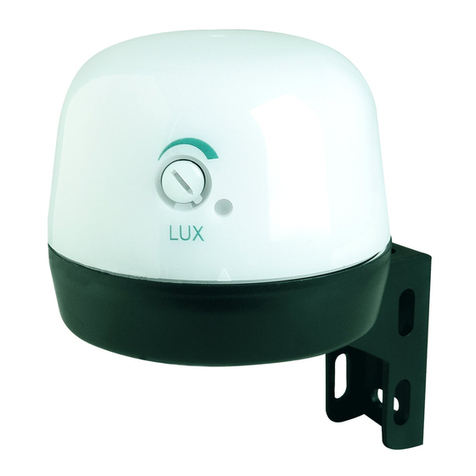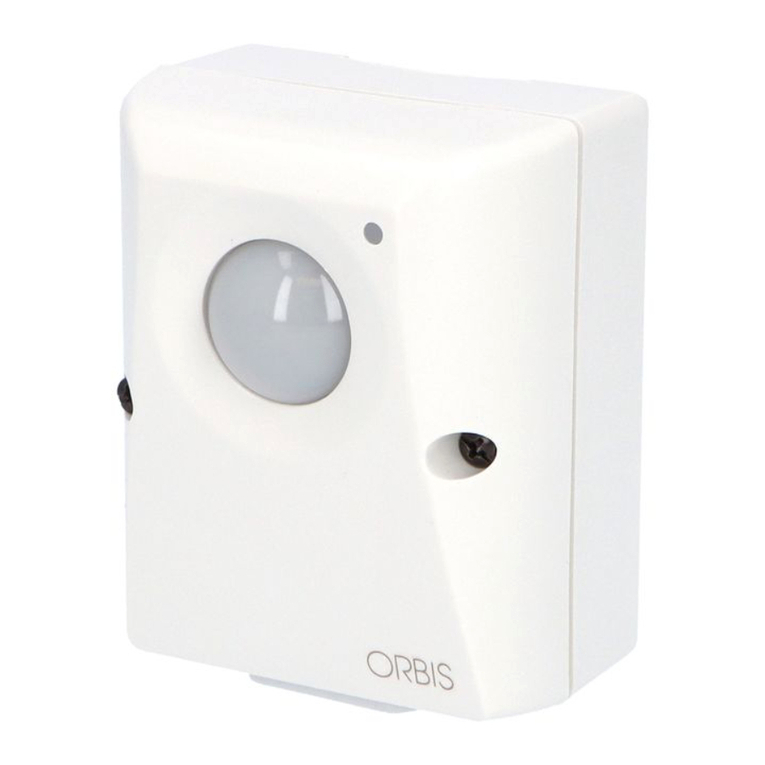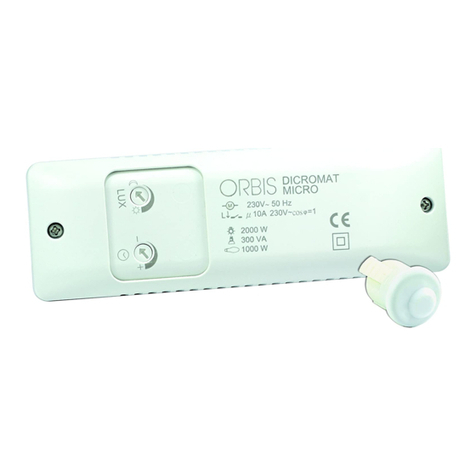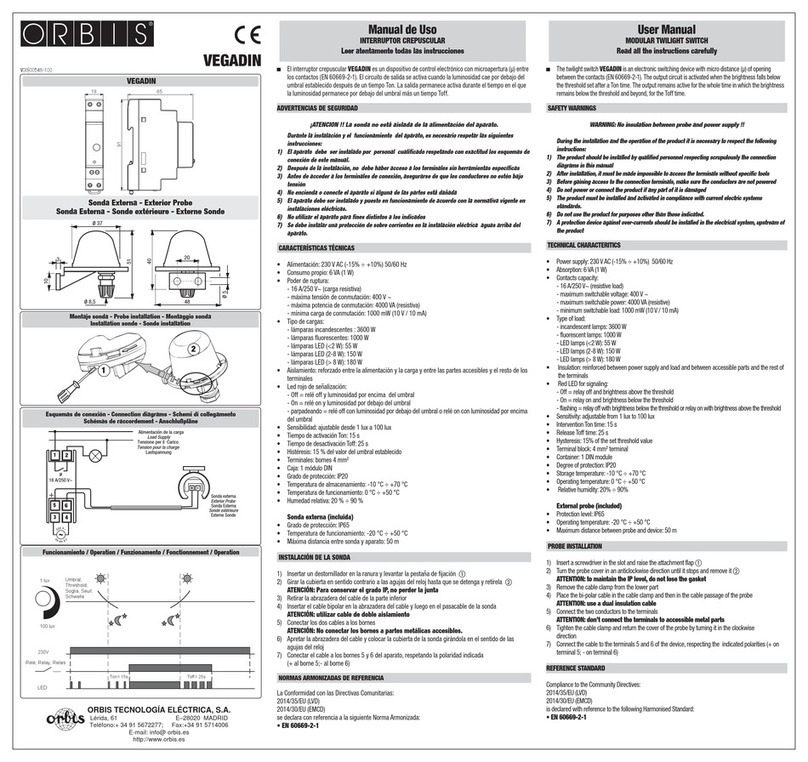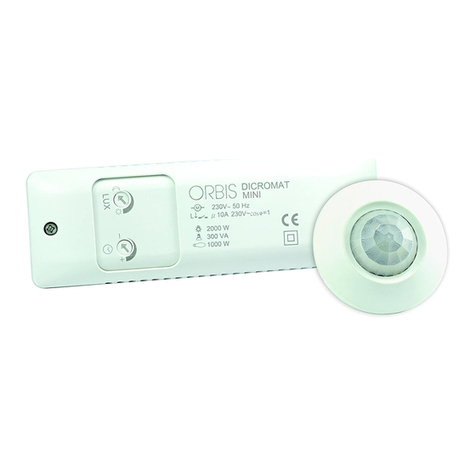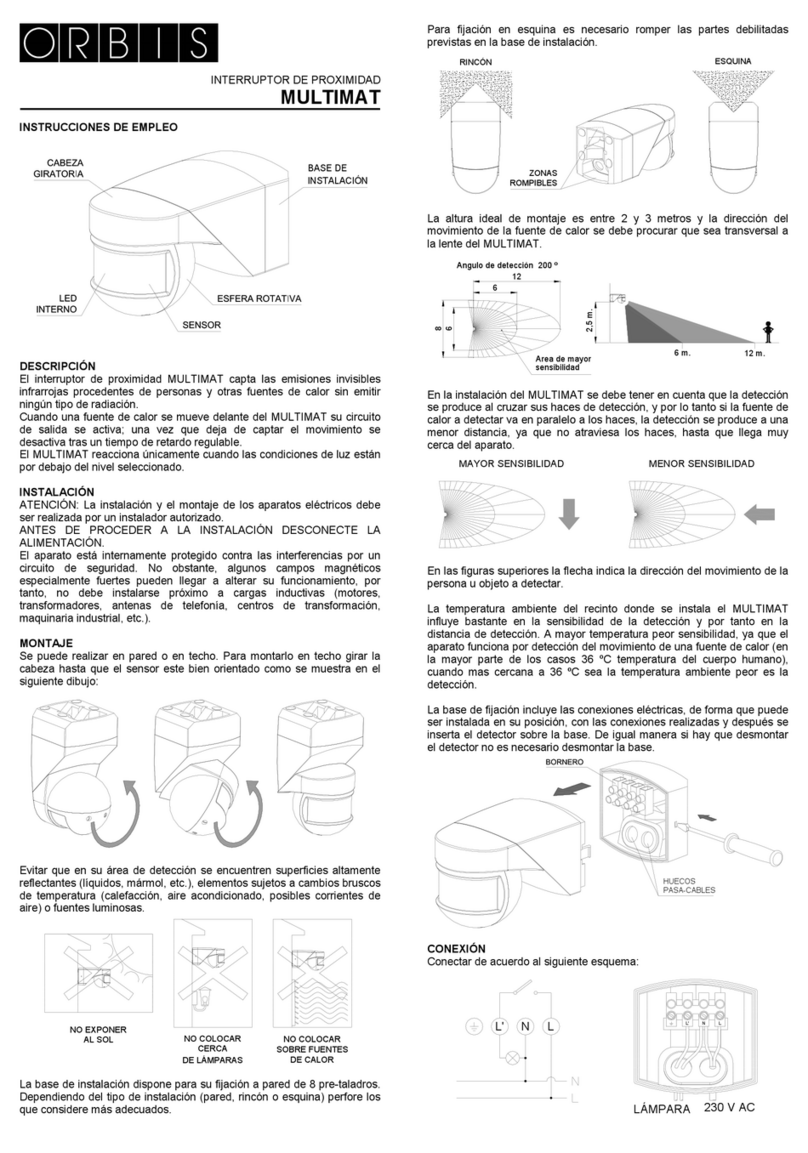PROXIMITY SWITCHES
DICROMAT + / DICROMAT 2+
USER INSTRUCTIONS
DESCRIPTION
The DICROMAT + proximity switch detects the invisible infrared emissions coming
from people and other heat sources without emitting any type of radiation.
In the DICROMAT + several movement detection sensors (additional sensors) can
be connected to a single power supply module.
When a heat source moves under any sensor of the proximity switch, its output
circuits are enabled, and when it stops detecting movement they are disabled after a
delay time adjustable only in the master sensor.
The DICROMAT + circuit, as well as circuit 1 of the DICROMAT 2+, only react when
the light conditions are below the level selected in the master sensor. Circuit 2 of the
DICROMAT 2+ always reacts independently of the regulated brightness.
The DICROMAT + is not suitable for alarm systems.
BOX CONTENTS
1 power supply module:
1 master sensor.
1 extension cable of 50 cm for sensors.
1 detection area delimiter.
INSTALLATION
WARNING: The installation and assembly of electric appliances should be carried
out by an authorized installer.
The appliance is internally protected against interference by a safety circuit.
Nevertheless, some particularly strong electromagnetic fields can manage to alter its
operation, therefore it should not be mounted near inductive loads (motors,
transformers, etc.).
In the DICROMAT + installation it should be kept in mind that the detection takes
place when crossing its detection beams, and therefore if the heat source to be
detected is in parallel with the beams (not crossing them), it will detect it at a smaller
distance, since it does not cross the beams until it is very near the sensor.
In the figures above, the arrow indicates the direction the person or object to detect
is moving in.
The ambient temperature of the enclosure where the DICROMAT + is installed has a
significant influence on the detection sensitivity and therefore on the detection
distance. The sensitivity is less at higher temperatures since the appliance works
with the movement of a heat source. The nearer the ambient temperature is to 36 ºC
(in most cases 36 ºC is the temperature of the human body), the worse is the
detection.
Fog or rain can impair the detection field. Clothing reduces the heat contribution to
the enclosure and so diminishes the detection sensitivity.
If two DICROMATS + are connected in the same enclosure, the lamp powered by
one of them should not be in the detection field of the other.
ASSEMBLY
Embedded in the ceiling, avoiding the presence of highly reflective surfaces (liquids),
elements subject to abrupt changes in temperature (heating, air conditioning) or light
sources and objects that can move with the wind (curtains, small trees, etc.) in its
detection area. Drill a hole 65 mm in diameter. The thickness of the ceiling should
be between 5 and 25 mm.
DISCONNECT THE VOLTAGE BEFORE BEGINNING INSTALLATION AND
WIRING. RESTORE THE VOLTAGE WHEN THE DEVICE IS COMPLETELY
INSTALLED.
Open the cover of the terminal housing of the power supply module.
Connect the power supply and the load according to the following diagrams:
Check the connections made carefully.
Close the cover of the terminal housing.
Open the cover of the sensor terminal housing of the power supply module.
Connect the DICROMAT + and DICROMAT SENSOR + according to the SENSOR
WIRING DIAGRAM located at the end of this instruction.
Close the cover of the sensor terminal housing of the power supply module.
Introduce the power supply module through the hole drilled in the ceiling.
Secure the sensor in the ceiling. Situate the legs on the inside of the ceiling hole.
Press firmly until the sensor rim is flush with the ceiling.
PUTTING INTO SERVICE. ADJUSTMENTS
In the first connection or in prolonged power cuts, the device remains active for 30
seconds, after which it passes to normal operation.
By rotating the sensor detector head completely to one side, the “Time 1” and
brightness adjusting selectors are uncovered.
By rotating to the opposite side, the distance adjusting selector will appear, and in
the DICROMAT 2+ version, the “Time 2” adjusting selector will appear.
SETTING THE DETECTION FIELD
To set the detection field proceed as follow:
To set the detection field, rotate the distance selector to the maximum position (7m),
the brightness selector to the position “☼” and the “Time 1” and “Time 2” selectors to
the minimum position.
Move into the limits of the detection field to check the coverage. The limits of this
field can be varied with the distance selector (S) up to 7 metres in diameter with the
device positioned at a height of 2.5 metres.
The DICROMAT + is supplied with a detection area limiter divided into 12 sectors
with two heights that can be trimmed. To exclude a sector of the field, cover the
corresponding part of the lens with the limiter adapted to your needs. Each sector
blocks an area of 30 degrees.
HIGHER SENSIBILITYLOWER SENSIBILITY

